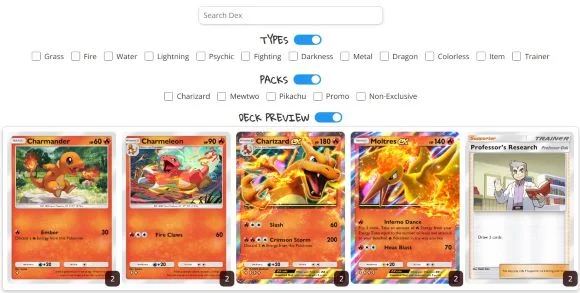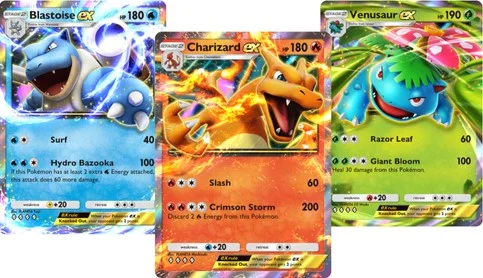Pokémon TCG Pocket: Early Access In-Depth Review
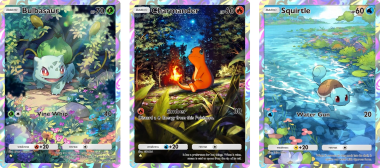
I recently had the chance to play the early access of Pokémon TCG Pocket, which is currently in soft launch in New Zealand. As a fan of card games, I was curious to see how it would compare to Pokémon TCG Live, and I must say, the user interface (UI) and the game overall is a significant improvement. In this article, I'll walk through my early experiences, gameplay tips, and general thoughts on the game's future.
Getting Started and First Impressions
The game's introduction is quite straightforward. You’re guided through a small tutorial that covers the basics—how to Open Packs, the Wonder Pick system, and Battle Mechanics. What it tries to do early on is to flood you with a lot of booster packs to open to give you enough cards to start with while at the same time trying to get you hooked on wanting to open more packs. Players are guaranteed a free pack every 12 hours, but they can speed up the timer with Pack Hourglasses that can be obtained through leveling up, or bought directly from the shop with Shop Tickets. The shop has a limited amount of what appears to be 70 hours worth of hourglasses per month. This may change once the full release rolls around.
As for what I did with my starting hour glasses and free packs, I personally went all-in on the Genetic Apex Mewtwo packs, hoping for an early Mewtwo immersive. To my surprise, on the 18th and final pack prior to getting into the battling introduction, I pulled a Crown Pikachu. Honestly, I was a bit disappointed, as I would have much preferred any of the immersive cards (Pikachu, Charizard, or Mewtwo). The immersive cards are much more visually stunning compared to their Crown counterparts, which are essentially gold-tinted (and somewhat ugly) versions of their base EX cards. Even The Pokémon Company (TPC) themselves put a lot more emphasis on the immersive cards in the early game trailers.
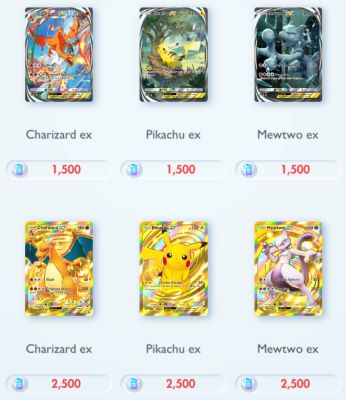
Starting Deck Choices
When you first launch the game, you're prompted to open one of three booster packs: Pikachu, Charizard, or Mewtwo. Your choice determines your starting deck, which EX card your first pack will contain, and the result of your first Wonder Pick shortly after.
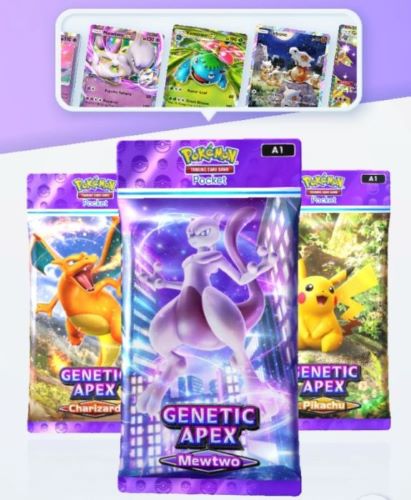
Here’s a breakdown of what you will get based on your choice:
Pikachu - You start out with a Rapidash Fire Deck
-
Fire Cards: 2x Growlithe, 2x Ponyta, 2x Sizzlipede, Heatmor, Centiskorch, Magmar, Rapidash
-
Colorless Cards: Pidgey, Rattata, Raticate, Jigglypuff
-
Trainer Cards: Poke Ball, Professor's Research
Kanto Starter: Squirtle EX Card: Arcanine
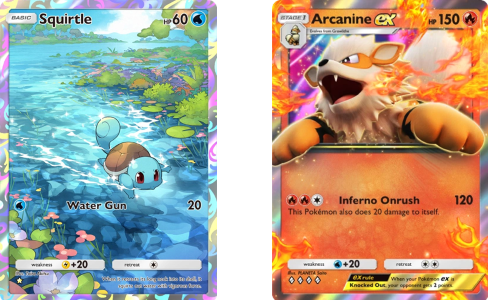
Charizard - You start out with a Sandslash Fighting Deck
-
Grass Cards: 2x Paras, 2x Exeggcute, 2x Cottonee, Pinsir, Whimsicott, Scyther, Parasect
-
Colorless Cards: Rattata, Raticate, Jigglypuff, Farfetch'd
-
Trainer Cards: Poke Ball, Professor's Research
Kanto Starter: Charmander EX Card: Exeggutor
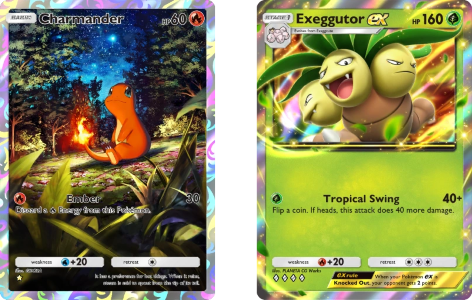
Mewtwo - You start out with a Rapidash Fire Deck
-
Fighting Cards: 2x Sandshrew, 2x Cubone, 2x Mienfoo, Hitmonchan, Onix, Sandslash, Mienshao
-
Colorless Cards: Pidget, Rattata, Raticate, Jigglypuff
-
Trainer Cards: Poke Ball, Professor's Research
Kanto Starter: Bulbasaur EX Card: Marowak
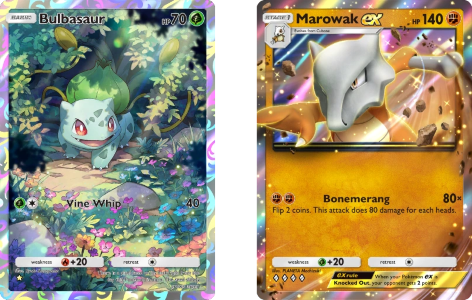
These packs will help you get started with early battles, but you will quickly outgrow them as you open up packs.
Wonder Pick System
One cool and very useful feature in Pokémon TCG Pocket is the Wonder Pick system. This allows players to choose from a selection of recently pulled cards by other players. The catch? You need Wonder Stamina, and the stamina required depends on the card rarity of the included cards. Basic cards use 1 stamina, holographic cards use 2, and full-art cards use 3. While I don't have the full breakdown of how stamina correlates to card rarity, it's a neat mechanic that adds some excitement to the card-collecting process. You simply go to the Wonder Pick screen, and scroll through the options available, and then select whatever cards you are interested in getting. You will have a 1 in 5 chance to get any of the cards on screen, so you should choose carefully before committing your Wonder Stamina as it does take 12 hours to recover just one stamina. Going only for the full art 3 cost picks may be tempting, but you should also balance out your picks to include lower rarity cards that can help you complete your existing decks as stamina is limited. Also, it is not clear if immersive and crown cards are obtaining through here.
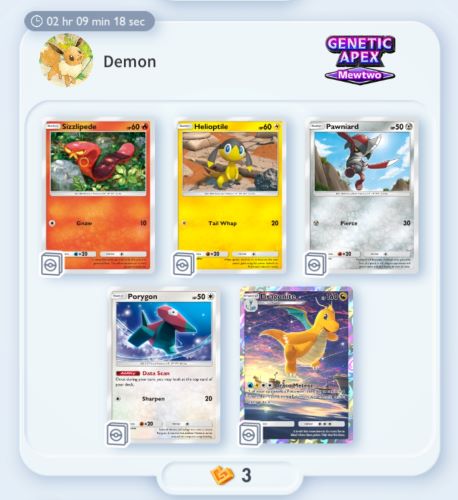
Battle System Overview
The battle system in Pokémon TCG Pocket is straightforward but has layers of strategic depth. Each match's objective is to be the first to score 3 points. Players earn points by knocking out enemy Pokémon—each standard Pokémon takedown earns 1 point, while knocking out an EX Pokémon nets 2 points. Each player is limited to a 20-card deck, and managing your limited resources is key to victory.
Turn Structure
Every match starts with a Ready Phase, where players can place Basic Pokémon onto the board. You can place them either in your single Active slot or onto one of your three Bench slots. You're limited to having a total of four Pokémon on the board at any time (one in the Active slot and up to three on the Bench), but you can place as many Basic Pokémon as you'd like in a single turn, up to that limit.
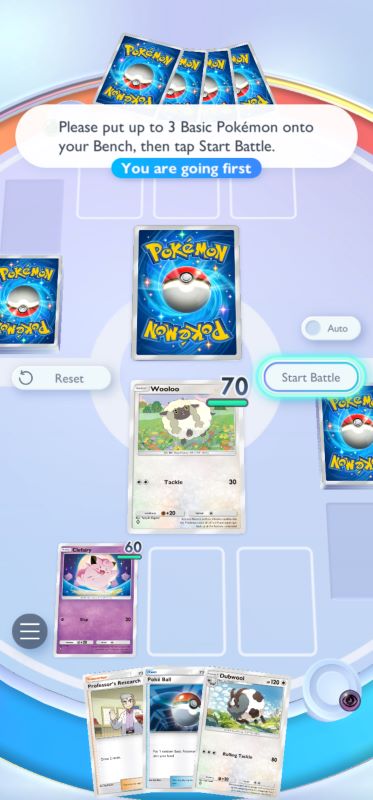
Energy and Attack System
From turn 2 onward, each player generates 1 energy per turn in their Energy Zone. This energy is the main resource that dictates what actions your Active Pokémon can take during a given turn. Each Pokémon card displays the energy requirements needed to perform its attack, and once those energy requirements are met, the Pokémon in your Active slot can launch the attack. As for what type of energy gets generated, it depends on what you choose during deck building. You can choose up to 3 different energy types to generate, and these will appear in a random order, but you will be able to see which energy is coming up for your next turn.

Retreat
Pokémon also have the option to Retreat during your turn by paying the energy cost listed on the card. Retreating is a critical mechanic, allowing you to swap out a Pokémon that is close to being knocked out, preventing your opponent from scoring a point. You can then bring that Pokémon back in later at a key moment to land the final blow on the opponent. The Dubwool in the image below has a retreat cost of 2 of any energy, which can be seen on the bottom right. Retreat costs vary from card to card, and are important to take into consideration when deck building.
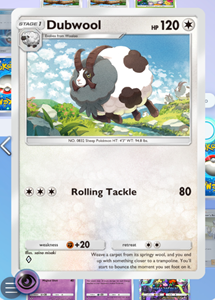
Abilities
In addition to attacks, there are a small number of Pokémon that have Abilities that can be activated once per turn. Abilities don’t require energy and can be used from either the Active or Bench slots, giving players more versatility and ways to impact the game.
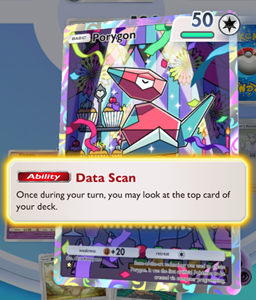
Turn 1 vs. Turn 2 Advantage
After the Ready Phase, a coin flip determines which player will go first. The player going first gets to draw a card as they normally would and can now begin to play Trainer cards, but cannot evolve any Pokémon or attack during their first turn since energy is not yet generated. However, despite not being able to generate any energy, going first puts you one turn closer to being the first player that can evolve a card. The player going second will be the first one to receive an energy, and has the distinct advantage of being the first to attack, potentially dealing damage early and gaining control of the game by knocking out opposing Pokémon before they can fully set up. This isn't my favorite way of balancing turn advantages, but this is what they went with.
Battle Options
There are multiple ways to battle, whether against AI or real players. Here’s a quick rundown of the modes:
Solo/Bot Battles - This mode includes an auto-battle feature, which helps speed up early matches. There are four difficulty levels: Beginner, Intermediate, Advanced, and Expert. Private Online Battles - Play against your friends. Beginner Random Online - A great place to learn the game while facing real players. "Trading Card Game Player" Random Online - For more challenging matches against experienced players.
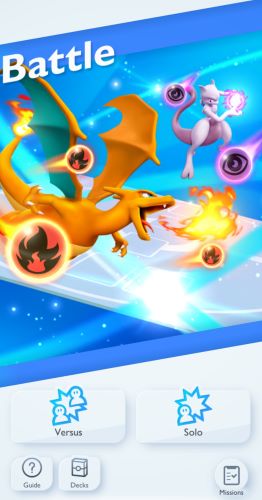
Currently, there’s no competitive mode, though I expect it will be introduced in the future.
Battle Notes
When I first started playing, I opted for the auto-battle feature during the beginner level bot battles. I wasn’t particularly excited about the actual combat and was mainly focused on quickly collecting the battle rewards. The auto-battle feature made it easy to cruise through the early stages without much effort. However, as I progressed and the difficulty increased, I noticed that the auto-battle feature began to fail in completing the missions I was targeting, especially as the requirements grew more challenging. These missions would require you to beat the enemy within a certain number of turns, or win matches without allowing the enemy to score points.
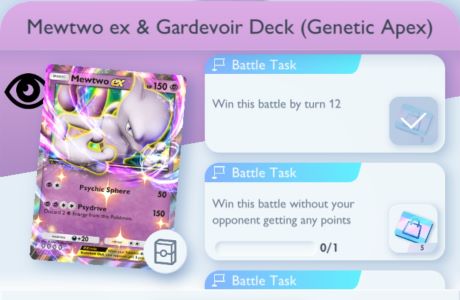
At this point, I decided to start manually battling. Initially, the matches felt somewhat boring and repetitive, but this changed as I advanced through the difficulty levels. As I unlocked more cards and climbed up the difficulty ladder, the battles became more engaging. With a broader selection of cards, I started to experiment with new deck builds tailored to counter the specific decks I was up against. During this process, I also discovered synergies between different cards and strategies that I hadn’t considered before.
Although none of the bot difficulties were truly hard to defeat, the real challenge was trying to win while working with limited card selections. Many of the decks I had were incomplete, and I still couldn’t run certain cards like Charizard or Blastoise because I was missing parts of their evolution lines. This forced me to adjust my strategy and build decks around the cards I had available, which added an extra layer of difficulty and creativity.
I’ve managed to beat all the AI difficulty levels, from Beginner to Expert, but I haven’t yet completed all of the individual missions on Expert level. These missions require multiple playthroughs with different types of decks, which has kept things interesting and encouraged me to continue refining my strategy.
Deck Building Notes
When you're first starting out, one of the simplest ways to put together a deck is by using the auto-build feature. This feature creates a basic deck for you, which you can later modify as you acquire more cards and gain a better understanding of deck strategies. Early on, building monotype decks (decks focusing on a single type of Pokémon) is an effective approach for the initial battles, especially when you're still working with a limited collection of cards.
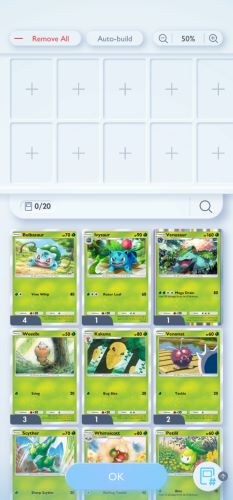
If you're finding certain battles challenging due to a lack of powerful cards, the game offers rental decks that can provide a temporary solution. You can unlock these rental decks under Missions > Decks by obtaining specific cards from booster packs. For example, getting a Venusaur EX card from a booster pack will unlock the Venusaur EX Deck (Genetic Apex) for you to use.
These rental decks are limited to 10 uses each, but they can be invaluable in helping you progress through missions, especially when you're stuck or don't have all the necessary cards to complete a deck. They also offer a great opportunity to try out different deck strategies that you might not have access to otherwise. In addition to getting you through tough missions, rental decks allow you to learn card synergies and develop strategies that can be applied when building your own personalized decks.
Another helpful resource is being able to view the expert-level AI decks. These are fully built and optimized decks used by advanced AI opponents, and you can study them to get ideas on how to improve your own deck-building skills. Whether it’s learning how to better structure your deck or discovering powerful combos, these expert decks can provide inspiration for your future builds.
Is There a Pity System for Packs?
In terms of a traditional pity system, where you’re guaranteed a card of a certain rarity after opening a certain number of packs, there is no such system in place. However, the game does offer an alternative form of progression through what are called Pack Points.
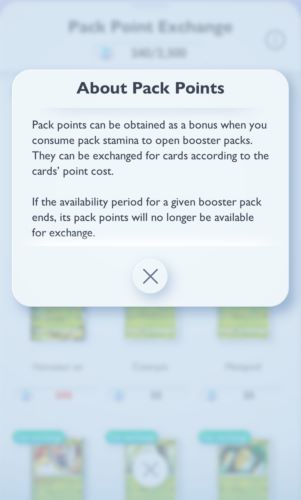
For each pack you open, you earn 5 Pack Points. These points can then be used to craft any card within the current set. The cost to craft a card depends on its rarity, with common cards costing as little as 35 points, while the rarest cards can cost as much as 2500 points. This system allows you to slowly build towards crafting specific cards that you want, but it is still heavily dependent on how many packs you open.
For players who spend money on the game, this system can be quite advantageous, as they can accumulate enough points to guarantee obtaining every card in the set if they open a sufficient number of packs. However, for free-to-play players, this system is much more restrictive. If you’re not spending money, it’s unlikely that you’ll accumulate enough Pack Points to craft more than one or two rare cards per set. Most free-to-play players will have to prioritize either saving points for the rarest cards or using them to craft specific common or uncommon cards that they’re missing.
In my personal experience, I prefer to save my Pack Points for cards that hold more sentimental or personal value. Collecting is still a big part of the game for me, so when I have enough points, I tend to use them on cards that I feel a personal attachment to—ones that are more immersive or iconic. This way, I can enjoy the collecting aspect without necessarily focusing on just optimizing my deck.
Subscription - $9.99/month
If you’re considering spending money, but want to keep it within a budget, the Premium Pass is an option priced at $9.99/month. The pass offers several perks that are primarily focused on enhancing your pack-opening experience and access to exclusive items. Here’s a breakdown of the benefits:

Daily Packs:
With the Premium Pass, you’ll be able to open one extra pack per day. Normally, free players get 2 daily packs, but Premium Pass holders get 3 packs daily. This is one of the more straightforward perks, allowing for a gradual accumulation of cards over time.
Premium Missions:
The Premium Pass unlocks access to premium missions, which provide various rewards. These include:
32 premium tickets 11 poke hourglasses 12 wonder pick hourglasses The quantities of these rewards feel somewhat arbitrary. For instance, the 11 poke hourglasses only amount to roughly 1 additional pack, which isn’t much. Additionally, you’re limited to buying 10 Pack Hourglasses with premium tickets per month, which also doesn't amount to a full pack. However, there is a notable exception: you can currently use 1 premium ticket to get a promo card in the Premium Shop, which is currently a Pikachu. This is likely one of the main highlights for collectors or players seeking unique cards.
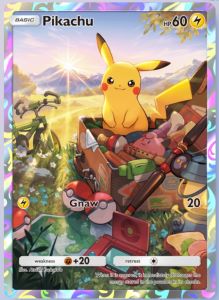
That said, I am not a huge fan of putting some cards behind paywalls. Even though I understand that the game wants to reward players that choose to support them with their wallets, I feel like content should never be made inaccessible to free to play players unless it is purely cosmetic. While these cards don’t necessarily impact gameplay in a major way, they are still collectibles that are being kept out of reach from the F2P community.
Free Trial and Automatic Renewal:
When you first sign up for the Premium Pass, you get a two-week free trial. However, this trial automatically converts into a paid subscription once it ends, so you’ll need to cancel the subscription at least 24 hours before renewal to avoid being charged. It’s important to note that you’re automatically enrolled in this renewal cycle unless manually canceled.
Net Result:
During the free trial period, you’ll get 15 additional packs: 14 from the extra daily packs, and 1 more from the premium missions (though the extra 1 pack from premium missions is hardly substantial). On top of that, you’ll receive a free promo card (like the Pikachu).
In a typical month, the Premium Pass would net you approximately 31 additional packs. This is 3 packs/day for 30 days, giving you 90 packs total for the month (60 from the free packs, and 30 from the pass).
To break down the cost-efficiency:
The normal cost to open 1 pack is 6 poke gold, which is equivalent to $1.20 at the base price of poke gold. However, if you buy in larger increments (e.g., buying 500 poke gold for $100), you’ll get +190 free poke gold, giving you 690 poke gold total. This works out to approximately 6.9 poke gold per dollar, or just under $1 per pack.
In comparison, the Premium Pass provides a more cost-efficient option for obtaining packs. The pass offers a steady stream of additional packs over the course of the month, and you’ll also gain access to premium-exclusive rewards. However, it lacks the instant gratification of opening all 30 additional packs at once, as these packs are gradually earned over time through daily rewards.
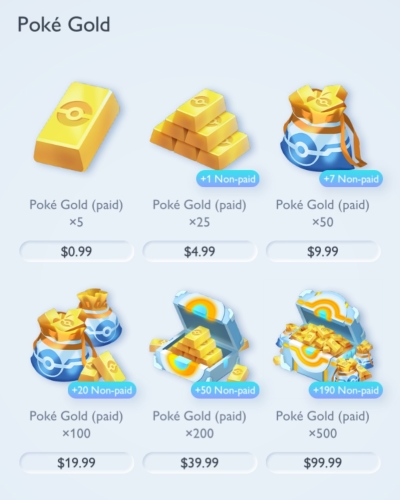
Is It Pay-to-Win?
Thankfully, the game is not overtly pay-to-win. You can earn a lot of cards through gameplay and daily logins, but spending money will accelerate the process. Rare cards, like the immersive and crown versions, are identical to their more common EX counterparts, meaning you’re not at a gameplay disadvantage without them. Below is a quick view of the 4 variations of Pikachu Ex, and although the rarities vary, they can all be played interchangeably.
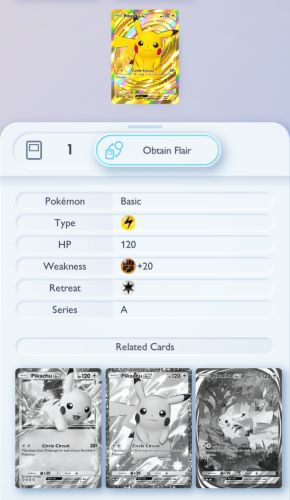
With that said, I did create a second account on my tablet to double my daily pulls and to potentially have an alternative account to play on with different cards that I may not have on my main account. Luckily enough, I managed to pull a Crown Charizard on my secondary account, and I did have fun trying to complete the solo missions again with a different set of cards. I am not interested in spending money on this game, so having two accounts to alternate between is sufficient for me.
Overall Thoughts
I initially had low expectations for the game, anticipating it would be nothing more than a money grab with a tedious battling system. However, to my surprise, I found it to be quite enjoyable. I ended up spending significantly more hours battling than I had anticipated, especially after not being too impressed with the first few battles I played. As I continued, I began to appreciate the intricacies of the battle system more and more.
The downside however was that by the third day of gameplay, I reached a point where I ran out of effective ways to farm more packs to open. The slowdown in pack opening does make me feel less incentivized to open the game. In addition, the overall lack of cards to complete my remaining missions and decks also is something that brings down the overall experience of the game. As someone that probably won't spend more than $10 on the monthly subscription for maybe a month or so, it will definitely take some time to build up my collection, and I don't really mind having to wait a bit to get the cards I need.
Overall, I believe the battle system in this game is a prime example of mobile card gaming done right. It’s straightforward without being overly simplistic, striking a balance that keeps it engaging rather than boring. The game also passes what I like to call the “bathroom test”—it’s the kind of app that’s good enough to open up while you’re on the toilet. You can easily fit in a match or two during a quick bathroom break, making it a perfect choice for short gaming sessions. I am really looking forward to what The Pokémon Company will add in the near future, and to the expansions that have yet to come.
